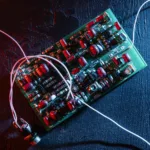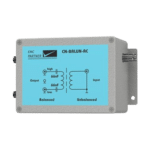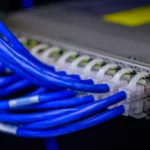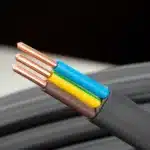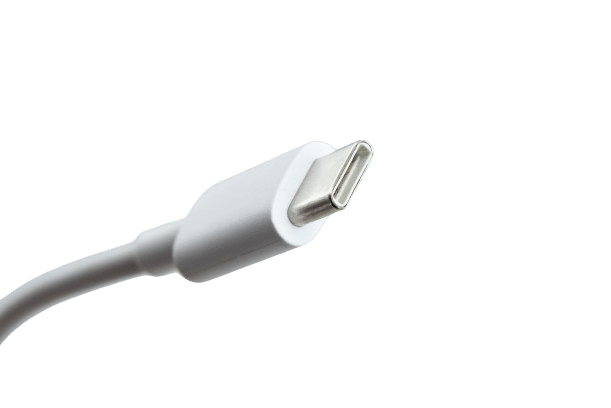
Introduction
Hassle-free connectivity is essential in ensuring seamless communication and data transfer between multiple devices. In this context, a USB-C has emerged as a versatile and powerful connectivity standard, revolutionising digital connectivity in various ways. With its compact size, robust flexibility, reversible design, and multifunctionality, it has become increasingly prevalent in modern devices––from smartphones and laptops to monitors and external storage devices. This comprehensive guide overviews the fundamental features, benefits, and practical applications of it, along with tips for maximising its connectivity potential.
Introduction to USB-C – One Connector, Multiple Functions
USB-C, also called USB Type-C, is the latest iteration of the USB standard, developed by the USB Implementers Forum (USB-IF) in 2014. It is a 24-pin multifaceted connector system designed to connect multiple modern devices easily. Unlike its predecessors, it features a symmetrical connector that can be plugged in either orientation––eliminating the frustration of inserting it the right way. This reversible design makes it more user-friendly and convenient compared to older USB connectors like Type-A and Type-B.
The Need for USB-C: Exploring Its Key Features and Advantages
USB-C is a rapidly adopted connectivity standard that offers a myriad of advantages over its predecessors. With the primary objective of addressing the shortcomings of previous USB standards, it offers notable features and benefits, including:
- Reversible Connector: The reversible design of USB-C connectors allows hassle-free insertion, saving users time and effort.
- High-Speed Data Transfer: USB-C supports high-speed data transfer rates, with the latest USB 3.2 Gen 2×2 specification capable of speeds up to 20 Gbps.
- Slim Profile: The compact size of USB-C connectors makes them ideal for thin and lightweight devices, such as ultrabooks and tablets. The compact design also reduces clutter caused by multiple types of ports.
- Power Delivery (PD): USB-C incorporates Power Delivery technology, enabling devices to deliver higher levels of power for charging and powering peripherals simultaneously. PD also allows bidirectional power flow, meaning a device can both send and receive power through a USB-C port.
- Video Output: USB-C also supports video output standards like DisplayPort and HDMI, allowing it to connect to monitors and TVs without the need for additional adapters.
- Universal Compatibility: USB-C is compatible with various protocols and standards, including USB, Thunderbolt, DisplayPort, and HDMI, making it a versatile connectivity solution for a wide range of devices and applications.
Practical Applications of USB-C: Streamlining Connectivity in Modern Devices
USB-C has become increasingly prevalent in modern devices due to its versatility, speed, and convenience. It offers several practical applications––illustrating its role in streamlining connectivity. Some of the typical applications include:
- Charging Devices: USB-C has become the standard for charging smartphones, tablets, laptops, and other electronic devices. With Power Delivery support, USB-C chargers can deliver higher wattages, enabling faster charging times and compatibility with multiple devices.
- Data Transfer: USB-C facilitates high-speed data transfer between devices, making it ideal for transferring large files such as videos, photos, and documents. Whether connecting a smartphone to a computer or sharing data between external storage drives, USB-C offers fast and reliable connectivity.
- Display Connectivity: Many modern monitors, TVs, and projectors feature USB-C ports for video output, allowing users to connect their devices directly without the need for adapters or dongles. USB-C also supports DisplayPort and HDMI protocols, enabling seamless video output to external displays.
- Peripheral Connectivity: USB-C is compatible with a variety of peripherals, including keyboards, mice, printers, and external storage devices. The versatility of USB-C ports allows users to connect multiple peripherals to their devices using a single USB-C cable or hub, reducing clutter and simplifying connectivity.
Expert Tips for Maximising USB-C Connectivity
Maximising USB-C connectivity can significantly enhance your productivity and device compatibility. Here are some expert tips to help you get the most out of it’s connections:
Invest in Quality (Certified) Cables
To ensure reliable performance and compatibility, it’s essential to use high-quality cables that meet the required specifications. Look for cables that are certified by reputable organisations like USB-IF to guarantee compliance with USB standards.
Check Device Compatibility
Before purchasing it’s accessories or peripherals, verify compatibility with your devices to avoid compatibility issues or functionality limitations. Some devices may only support certain features or protocols, so it’s important to do your research beforehand.
Consider Multiport Adapters
Multiport adapters and hubs can expand the functionality of USB-C’s ports by providing additional connectivity options such as USB-A ports, HDMI outputs, and SD card readers. These accessories are especially useful for laptops and tablets with limited port options.
Update Firmware and Drivers
Manufacturers often release firmware updates to help address device compatibility issues and improve performance. Keep your devices’ firmware and drivers up-to-date to ensure compatibility with the latest standards and protocols.
Avoid Overloading Ports
The ports can provide power, data, and video output simultaneously, but overloading them can lead to reduced performance or compatibility issues. Avoid connecting too many devices or drawing excessive power from a single port.
Be Mindful of Power Delivery
When using it for charging, be aware of the power delivery capabilities of your devices and chargers. Using incompatible chargers or cables can result in slower charging speeds or potential damage to your devices. Stick to certified chargers and cables to ensure safe and efficient charging.
Takeaway
It has undoubtedly revolutionised connectivity by offering a versatile and user-friendly solution for transferring data, powering devices, and connecting peripherals. With its reversible design, high-speed data transfer capabilities, and support for power delivery, it has become the standard for modern devices across various industries. By following the tips outlined in this guide and leveraging the features of USB-C, users can simplify connectivity and enhance their overall computing experience.






